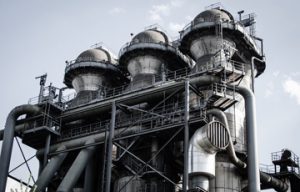
A type of carbon that has been processed to make it extremely porous and hence has a very large surface area accessible for adsorption and chemical reactions is known as activated carbon (also known as activated charcoal or activated coal). Carbonaceous adsorbents that have undergone processing and exhibit a high level of crystallization and porosity make up activated carbon.
The capacity of activated carbon to adsorb various contaminants and impurities is quite strong. It has several uses, including in the food, industrial, or pharmaceutical sectors, as well as gas or wastewater treatment.
Applications of Activated Carbon
Treatment of Gases and Air:
Activated carbon is a key component of industrial operations, as it is used to retain harmful substances in gases released during operations. Volatile Organic Compounds (VOCs), smells, and solvent recovery can be accomplished using regular activated carbon. Examples of these include the removal of hydrogen sulfide, mercaptans, formaldehyde, ethylene, alcohols, ammonia, and mercury vapors. activated carbon may absorb or expel a wide range of gases and vapors due to its high internal surface and unique impregnating agent.
Food Sector:
All types of activated carbon used in the food industry meet Food Chemical Codex certifications of conformity with food compatibility. It is used in fruit juices, vegetable oils, wines, alcoholic beverages, non-alcoholic beverages, candies, sweets, and purification of additives like monosodium glutamate, glycerin, glucose, essential oils, or sweeteners.
Water Purification and Treatment:
Activated carbon and organic chemicals are both used to remove substances from water. Organic chemicals such as pesticides, herbicides, ozone, and irritants that have an unpleasant taste or odor can be used as an adsorbent. To remove chlorine, oils, fats, and natural organic matter from waste and surface waters, the activated carbon of vegetable origin made from pine wood and coconut shell containing macropores is used, while bituminous coal with mesopores from the mineral origin is used to clean wastewater containing contaminants of intermediate molecular weight.
Chemical Sector:
The chemical sector can also use activated carbons. For instance, for organic acids, textile dyes, mercury removal, or the recovery of solvents.
Pharmaceutical Sector:
Activated carbon can be designed particularly for the pharmaceutical industry depending on the activation procedure and the form of the carbon. Using activated charcoal can help with the production and purification of vitamins or antibiotics, as well as the sanitization of blood fluids and the creation of therapeutic charcoals.
Other Industrial Applications:
It has a wide range of industrial applications, including metal recovery, synthetic fibers, biodiesel, and the purification of amino acids.
Depending on the demands of the product, different types of active carbon can be supplied. For the retention of pollutants in industrial processes, we provide PAC (powdered activated carbon), GAC (granular activated carbons), and EAC (extruded activated carbons/pellets) We also offer product-related queries and quotations.












